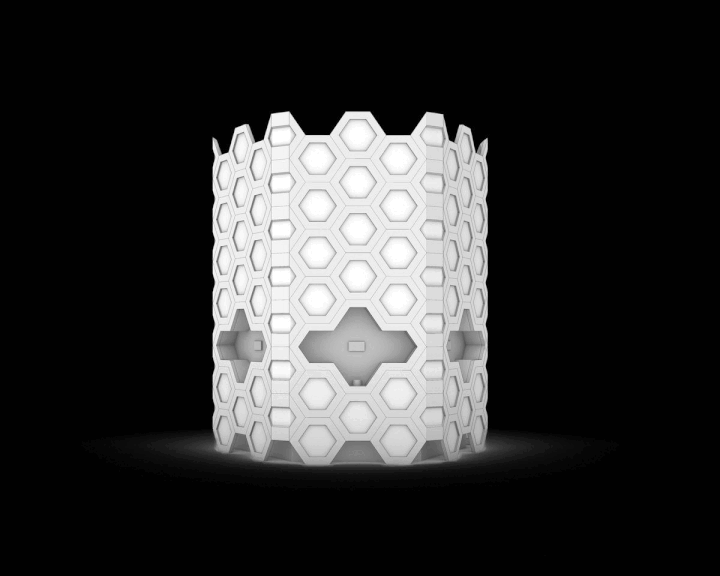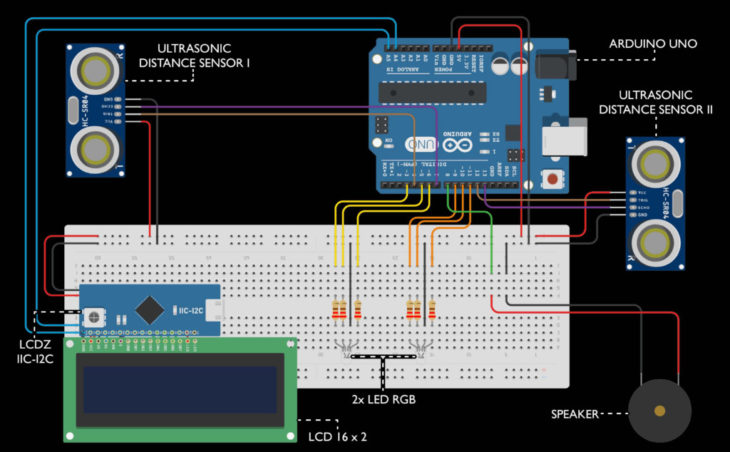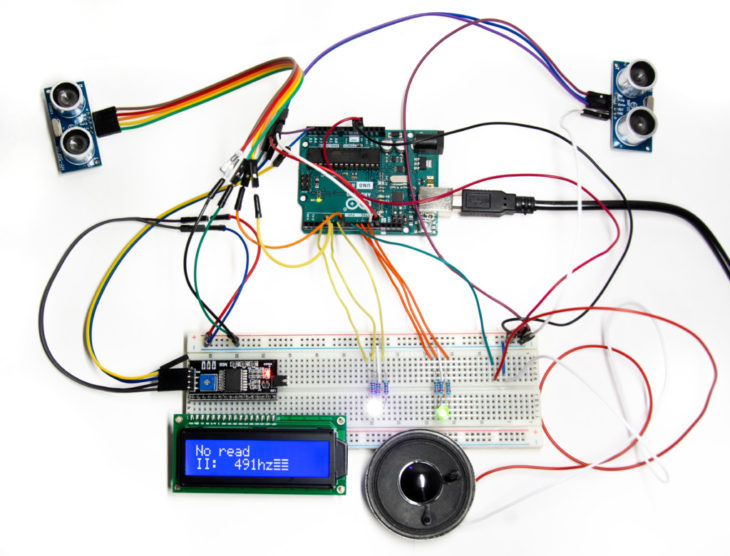Ping Floyd – Interactive Light and Music Installation
2021/22 Introduction to Programming and Physical Computing, Final – Luca Wenzel
Ping Floyd is an interactive light and music installation that involves its visitors. There are several input panels that allow one person to control a specific range of tone frequencies. Each frequency is paired with a color. The input is recorded by a distance sensor, which is controlled by the user’s hand. The tone frequency rises and the paired color shines brighter, the further the hand is moved away from the sensor. If there is no person at an input panel and no input is available, a low and continuous tone is played and the light changes to white. The sound frequencies caused by the various panels are superimposed, so that up to six people can generate abstract music together, while influencing the light installation. The user is aware of the played frequency, as it is displayed on a screen in the input panel.

Installation Design
The installation is a 4 m tall hexagonal column that is made up of several hexagonal light panels. The inside of the column houses the technical components, as well as the speakers. There is an input panel located on every side of the column. There, a person each can control the paired frequency and color.

Prototype Circuit Design
The prototype simulates two input panels of the full installation. An RGB represents the paired light panels for each distance sensor input. The tracked distance is mapped to tone frequencies that are being played on the speaker. The LCD panel displays the frequencies that each of the inputs is creating. An LCDZ IIC-I2C component is used in order to reduce the needed wiring to the Arduino Board, as the distance sensors and RGBs already use most of the available pins.

Prototype
Possible Further Development
Instead of mapping the ping distance to frequencies, the code could be modified to output specific notes to the speaker. Another input could be added in the installation that controls the tone durations. Instead of randomly generating the distribution of the different colors on the hexagonal panels of the installation, a higher mapping value could result in a higher amount of hexagons for the paired color. By using a camera instead of ultrasonic distance sensors, the amount of people in front of each installation side could affect the colors and frequencies.
Video
Credits
Ping Floyd is a project of IAAC, the Institute for Advanced Architecture of Catalonia, developed in the Master in Advanced Architecture (MAA01) 2021/22 by: Student: Luca Wenzel; Faculty: Cristian Rizzuti; Faculty Assistant: Arman Najari.
Component Graphics: www.tinkercad.com
